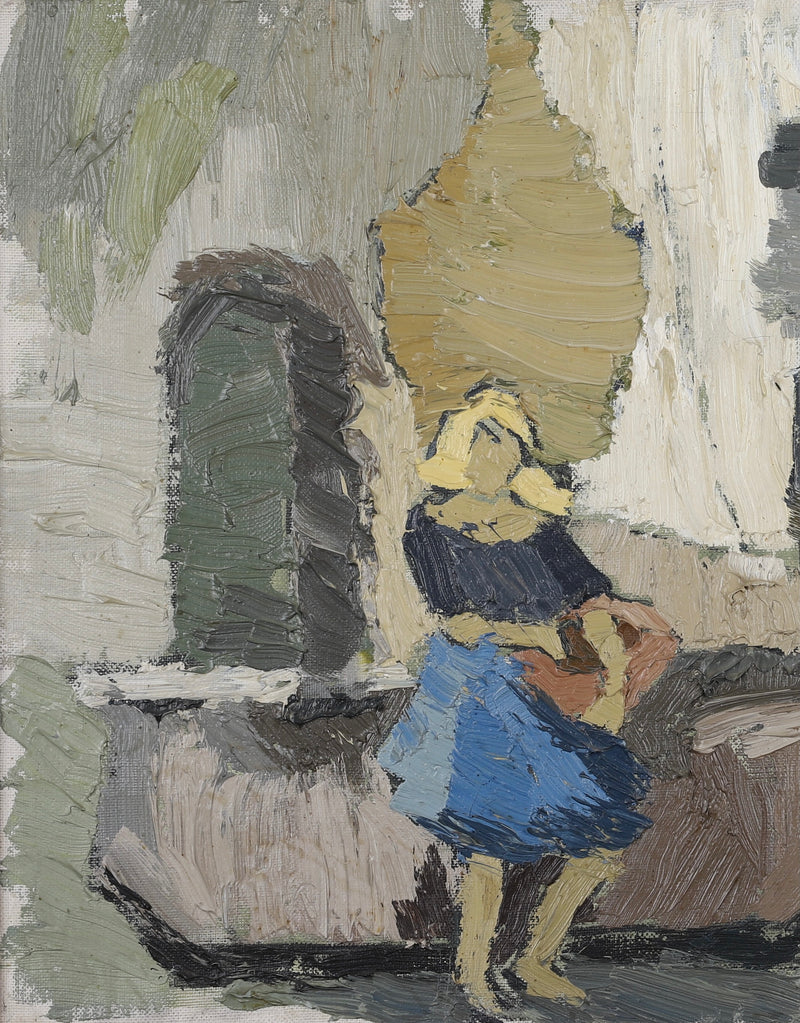The Influence of Figurative Oil Painting on Modern Art and Culture
The Influence of Figurative Oil Painting on Modern Art and Culture
Blog Article
The Role of Feeling and Expression in Figurative Oil Paint: An In-Depth Analysis of Subject Issue and Composition
The interplay of feeling and expression in figurative oil paint functions as a critical lens where one can check out the complex connection between subject and make-up. Artists harness different strategies, from shade option to brushstroke characteristics, to cultivate emotional resonance within their works. This nuanced orchestration not only shapes visitor assumption however also welcomes a much deeper questions into just how these components coalesce to reflect the intricacies of human experience. As we explore this abundant terrain, one should think about how specific instance research studies illuminate the broader effects of these imaginative options.
Recognizing Emotion in Art
Emotion in art functions as an effective channel for expression, allowing musicians to share complex feelings with their work. In metaphorical oil paint, this psychological depth is frequently depicted through the depiction of the human figure, recording the subtleties of human experience. The option of subject, color scheme, and brushwork all add to the emotional resonance of an item.
Artists often bring into play individual experiences, societal issues, or global motifs to stimulate sensations in the viewer. For instance, a picture may show susceptability, while a dynamic number in movement can symbolize liberty or turmoil. These psychological strings link the audience to the artwork, fostering a discussion that transcends the aesthetic medium.
In addition, the interaction between light and shadow can amplify emotional intensity, assisting the visitor's look and drawing interest to particular components within the composition. The use of appearance in oil paint better includes layers of intricacy, inviting a tactile response that boosts the psychological experience. Generally, understanding emotion in art is essential for appreciating the subtleties that identify metaphorical oil painting, as it changes mere representation right into a profound expedition of the human problem.
Crucial Element of Make-up
In the realm of metaphorical oil paint, the structure acts as the underlying framework that arranges visual aspects and boosts the emotional story. Important elements of composition include balance, contrast, prime focus, and rhythm, each adding to the overall influence of the art work.
Balance refers to the distribution of visual weight within the painting, which can be achieved through unbalanced or symmetrical setups. A healthy make-up supplies security, allowing the viewer to engage with the piece sympathetically - figurative oil painting. Contrast, on the other hand, includes juxtaposing different elements, such as light and dark or cozy and amazing shades, to lead the customer's eye and evoke emotional reactions
The focal point is essential, as it guides interest to the most significant component of the paint, usually highlighting the emotional core of the story. By skillfully incorporating these vital components, artists can craft mentally resonant and compelling figurative oil paints that captivate and involve their audience.
Subject and Its Impact
Topic plays an essential duty in figurative oil painting, as it not just serves as the foundation for the narrative but likewise forms the viewer's interpretation and emotional engagement with the art work. The selection of topic-- be it a singular figure, a group dynamic, or a thematic representation-- directly influences the psychological ambience shared to the audience.

For circumstances, portraits commonly evoke individual connections, disclosing the details of human expression click this site and personality, while scenes portraying public tasks can create a sense of belonging or nostalgia. The historical and social context of the subject matter enriches the customer's understanding, prompting much deeper reflections on social norms, worths, and the human condition.
Different subjects also create varying levels of interaction; a remarkable problem portrayed with numbers in tension may elicit sensations of anxiety or empathy, while serene landscapes can conjure up peace and contemplation. Ultimately, the influence of topic in figurative oil painting is profound, as it acts as an avenue for emotional vibration, assisting the customer's feedback and interpretation, and fostering a connection in between the viewer and the art work. This interaction is vital for the effective communication of the musician's intent.
Techniques for Stimulating Sensations
The efficiency of metaphorical oil paint in sharing emotions is significantly affected by the techniques used by the musician. One of one of the most essential techniques is making use of shade theory, where the calculated selection of shades can stimulate specific emotional actions. Warm shades, such as oranges and reds, typically generate feelings of passion or aggressiveness, while cooler tones like blues and greens often tend to evoke peace or sadness.
Another important technique is the control of light and darkness, recognized as chiaroscuro. This technique enhances the three-dimensionality of numbers, producing significant contrasts that can heighten psychological deepness. The placement of light can lead viewers' feelings, highlighting details elements of the make-up.
Brushwork additionally plays an essential function; loose, meaningful strokes can communicate energy and spontaneity, whereas smoother strategies may recommend harmony or precision. Furthermore, the plan of subjects within the make-up can affect psychological impact. Close closeness can suggest affection, while range may suggest isolation.
Ultimately, the mix of these methods makes it possible for artists to craft stories that resonate with the visitor, changing a mere visual experience right into an evocative emotional journey. - figurative oil painting

Situation Researches of Remarkable Functions
Analyzing notable works of metaphorical oil paint exposes just how various strategies are employed to evoke effective emotions. One exemplary instance is Edvard Munch's "The Scream," where the distorted figure and swirling background communicate existential fear. Munch's use color-- vivid oranges and deep blues-- increases the emotional impact, showcasing how combination selections can shape visitor experience.
An additional substantial work is Pablo Picasso's "Les Demoiselles d'Avignon." Right here, bold brushstrokes and fragmented forms show a tumultuous psychological landscape, testing standard representations of the women number. Picasso's innovative composition not only captures the audience's attention but also invites reflection on styles of identity and sexuality.
Furthermore, Frida Kahlo's "Both Fridas" supplies a poignant expedition of duality and self-identity. The different figures, connected by a shared heart, exhibit Kahlo's emotional deepness and individual story. figurative oil painting. Her thorough attention to helpful hints detail and symbolic components serve to involve audiences on a natural degree
These situation researches highlight the extensive link in between emotion and structure in metaphorical oil painting, exposing how artists harness technique to communicate complex sensations and narratives that reverberate throughout time and society.

Final Thought
To conclude, the interaction of emotion and expression in metaphorical oil painting dramatically improves the visitor's experience and interpretation of the art work. Through a mindful selection of subject matter and compositional methods, musicians communicate extensive narratives that reverberate on both individual and universal hop over to here degrees. The application of shade brushwork, chiaroscuro, and theory more intensifies psychological depth, transforming each canvas right into a powerful reflection of the complexities of the human experience.
In metaphorical oil painting, this psychological deepness is often portrayed with the depiction of the human number, recording the subtleties of human experience.Furthermore, the interaction between light and shadow can enhance psychological intensity, assisting the customer's look and drawing interest to certain elements within the structure. The usage of structure in oil painting further includes layers of complexity, inviting a responsive feedback that boosts the psychological experience.The focal factor is important, as it routes focus to the most significant part of the painting, usually highlighting the psychological core of the story. Inevitably, the influence of subject issue in metaphorical oil paint is extensive, as it offers as an avenue for emotional resonance, leading the viewer's response and interpretation, and promoting a connection in between the onlooker and the artwork.
Report this page